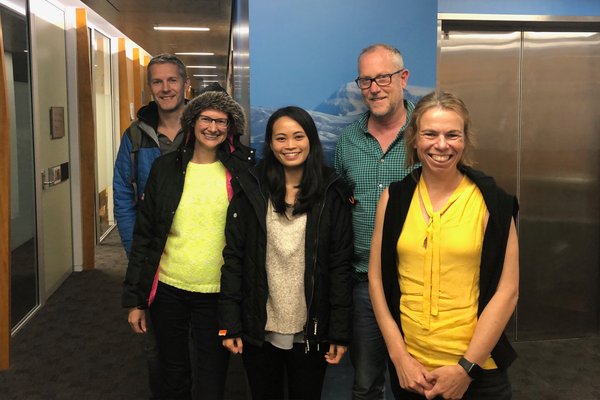Making connections in Antarctica
What attracts museum research scientist Dr Nerida Wilson to the Scotia Arc, a series of islands linking South America to Antarctica?
Ever since Charles Darwin noted differences in the bills of finches living on adjacent islands in the Galapagos, scientists have been intrigued with the effects of geographical isolation – and its opposite, connectivity – on populations and species.
Darwin reasoned that two populations of a single species living on adjacent islands would eventually become two species if isolated for long enough and subjected to different selective pressures, such as food availability. But barriers between populations are not always so obvious. When is an island an island, and what are the subtle connections between adjacent populations that help to maintain a species?
The answers to such questions are vital for understanding the living world and informing the management of natural resources. When the islands in question link two continents, they become a living laboratory of enormous interest to scientists like the Australian Museum’s Dr Nerida Wilson.
Stepping stones
Nerida is conducting studies on the marine biota of the Scotia Arc, a narrow chain of islands linking South America and Antarctica.
‘The geological history of this area has created perfect field conditions for testing theories about connectivity, speciation and the effects of climate change’, said Nerida.
‘Most of the Scotia Arc is volcanic in origin and parts resemble a mountain range with some peaks emerging from the ocean as islands and others submerged as sea mounts, while deep trenches separate some peaks from others.
‘In this study, we’re asking whether the Arc acts as a series of stepping stones for the distribution of organisms, allowing gene flow between populations, and whether barriers might lead to the formation of new species.’
Granted
Thanks to a grant by the US National Science Foundation (NSF), Nerida and her colleagues from the Scripps Institution of Oceanography have already conducted the first of two five-week research expeditions to collect animals from different habitats, with the next planned for early 2013. But getting to the remote, inhospitable area and undertaking field work both present major logistical challenges.
Fortunately, Nerida has an $80,000-per-day research vessel at her disposal (funded by the NSF) to collect biological samples from different underwater habitats. The vessel is fully crewed, allowing the onboard research team of around ten scientists and technical staff to focus on their all-consuming research – sorting and identifying samples in preparation for detailed genetic analysis.
‘With this vessel we can trawl depths greater than 200 metres and collect the particular types of marine invertebrates we’re after – primarily snails, sea stars, sea spiders, crabs and polychaetes.
‘We’re also using multi-beam sonar to map the ocean floor so we can take scale and depth into account.’
Outcomes
Despite the depth and conditions in the bleak Southern Ocean, many species seem to be quite widespread and there’s plenty of diversity to be found. Like most scientists, Nerida believes that global warming is changing the underlying marine food webs that lead eventually to economically important species.
‘Besides being a hypothesis-driven scientific study and boosting museum collections, this research will be useful for monitoring and understanding the ecological effects of climate change’, Nerida said.
‘We can predict that species adapted to living within a narrow temperature range will become extinct with warmer conditions, and we can also assume that mobile species from neighbouring areas will start to move into new areas as conditions change to suit them.
‘So what happens to those organisms that can’t readily disperse? We believe that genetic connectivity can provide early warning signs of changes and local extinction.
‘There has never been a better time or place to study these processes. And there’s a sense of urgency about it – the rate of change is on the increase.’
Brendan Atkins
First published in Explore 34(2), pp10–11 (2012)










